Simple tyre maintenance tips to keep amid lockdown from Bridgestone
Covid-19 and the resulted lockdown kept most of the trucks out of roads and travel. S.S. Gusain of Bridgestone India talks about simple tyre maintenance tips to tyres in good condition even during the lockdown
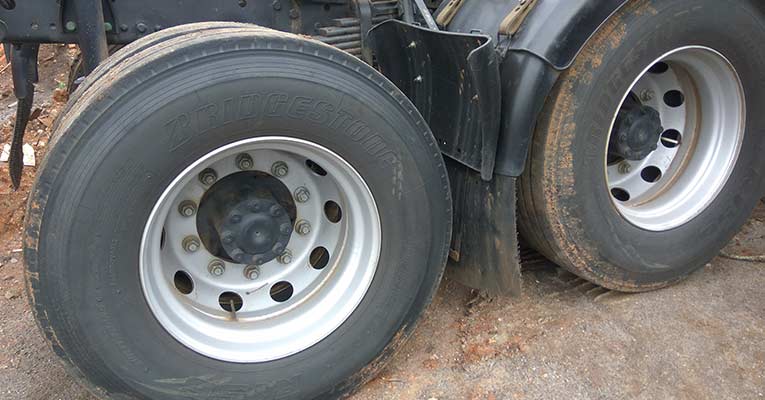
Covid-19 and the resulted lockdown kept most of the trucks out of roads and travel. S.S. Gusain of Bridgestone India talks about simple maintenance tips to keep tyres in good condition even during the lockdown.
The Covid-19 pandemic has restricted most of the non-essential travel putting brakes on almost all forms of vehicular movements. The most impacted was the commercial traffic, till the time movement restrictions were removed. Covid-19 has become a major challenge for commercial vehicle owners.
Most of the tips related to tyre care can be undertaken with a proper visual check. So it is advisable that fleets perform these essential checks at regular intervals to make sure that the tyre remains in a good condition and free of any damages even when the vehicle is parked.
Why during lockdown?
This is more so important for fleet operators, who may have reduced their fleet movement as a result of the current situation and now have vehicles that have not been on the road for an extended period of time.
Tyre maintenance becomes even more essential in this situation. The tyre care principles remain constant whether your vehicle has been in use or has been parked, however, they become an even more essential checkpoint if the vehicle remains parked for 2 weeks or longer. Following these principles can not only extend tyre life but also add to the fleet’s bottom line by reducing the need for replacements. Tyres in optimum conditions also add to the fuel efficiency of vehicles and as such tyre maintenance is as critical as mechanical maintenance.
Here are a few tips that will keep your tyres in good condition:
Visual check
Check your tyres on a regular basis. A visual check is the first thing you should do whether the vehicle is operative or on standby and make sure there are no unwanted objects like nails, stones embedded on the tread. Also, check the tyres for abnormal wear and tear, all potential penetrative items such as screws, bolts and stones should be removed.
This is a simple check but an essential one.
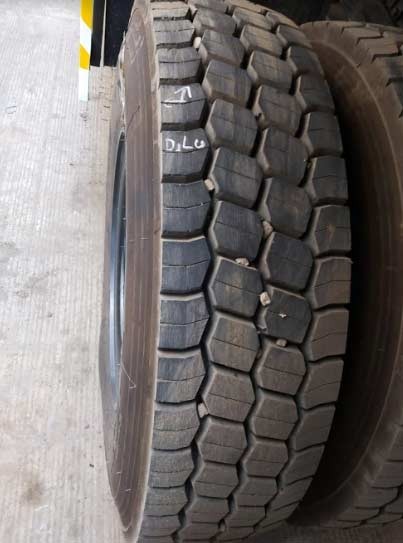
Stone entrapment
Stone entrapment may seem harmless but they can lead to tyre damage or in extreme case serious damage to tyre casing like tread separation leading to tyre becoming unusable. Stones entrapped in tread grooves result in a phenomenon called stone drilling which happens due to stone pushed inside rubber with each revolution of the tyre. When they reach to steel belts of the radials, it may lead to tread separation. Many good casings are rejected by retreaders because of several damages on belts due to stone drilling. A very simple solution to this issue is to remove entrapped stone whenever possible, even at every break in the journey.
Same as stone entrapment, embedded nails/ screws/ bolts etc. can also damage the tyre, mildest form being puncture. As soon as these embedded objects are observed, they should be removed carefully and in case it seems the penetration was deep, the tyre should be checked for any damage to steel belts or casing.
Tyre Inflation
If it is possible, check the tyre pressure at cold condition, at least every two weeks and maintain the recommended pressure. Put valve caps if found missing. Correct tyre pressure is one of the key components of vehicle efficiencies.
Chemical contaminants
A lot matters on where the vehicle has been parked. Make sure that your tyres are not standing in pools of water or contaminants, as many industrial chemicals and solvents, including oils, petrol and diesel, can severely damage tyres. If you spot these contaminants on your tyres, you should remove them using water and a mild detergent. Once complete, make sure that the tyres on your vehicle are parked in a drier area.
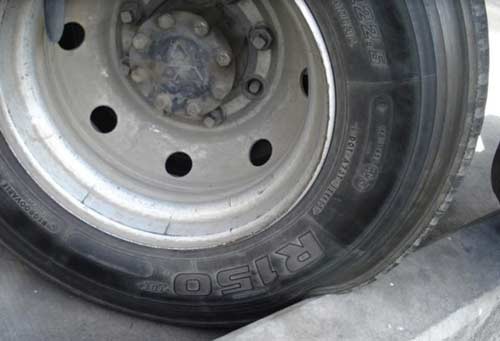
Stress damage
Check that the tyre footprint for all tyres on the vehicle is sitting on a flat road surface to prevent stress damage or abnormal deformations, which could result in the tyre needing to be changed. If the vehicle is parked for more than two weeks, make sure that it is moved once in a while so as to avoid the flat spot.
Flat spot
It is common for vehicles to have a flat spot when it is parked for a long time. If you have increased the air pressure during lockdown to avoid flat spot, correct the pressure before the start of operations. And finally, make sure that the tyre sidewalls for all tyres on the vehicle are not pressed up against kerbs or raised ironworks, as this could severally damage the tyre. After parking, it is advised to have a look around the vehicle and check for any tyre tread or sidewall deflecting against any such objects.
There are a few visual tyre checks one should also do while on the road. Commercial vehicle drivers should be concerned about these abnormalities as these directly affect the safety of the vehicle on road.
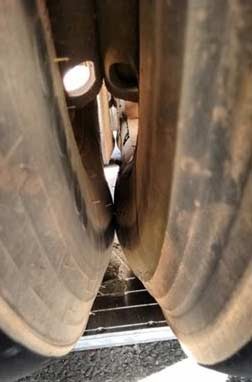
Dual tyres
Looking down at the dual tyres, if you notice that they are touching each other, as shown in the picture, immediate action is required. This is called dual touching - It happens when air pressure is not enough compared to the requirement and bottom parts of both tyres are deflected to the extent that they touch each other. It is advisable not to continue driving in this condition or else both the tyres may get damaged beyond repair. It can also be fatal as it may lead to a sudden burst. When dual touching is noticed, air pressure must be corrected as soon as possible.
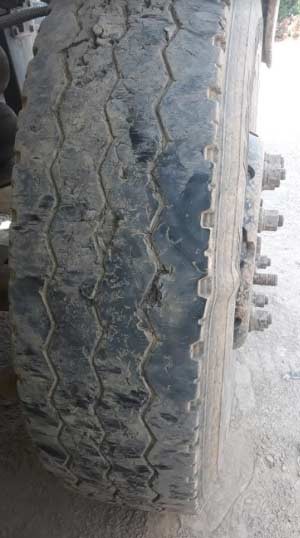
Sidewall bulges
Another visual check is to see if the sidewall of the tyres are smooth and do not have any bulges as shown in the picture. Sidewall bulging, as this is called it happens due to breaking of body plies. Penetration of external object on tread or impact on sidewall can be reasons why plies might be broken. Tyres may burst if it is driven in such condition which may lead to safety risk in case of the sudden burst of neglected bulging. If any damage is noticed it should be repaired immediately by the proper method at a good repair shop.

Trapped stones
Sometimes Stones get trapped between duals, if tyres continue to run in such condition, one or both tyre may get damaged. The condition also possesses a fatal risk, if the vehicle is running at high speed, the stone may get dislodges and hit the vehicle behind it. In normal conditions, stone lodging can be noticed by the driver because of abnormal noise and vibration it creates. The stones should be removed carefully and slowly to avoid any damage by sudden removal. After removing the stone, carefully check for any sidewall cut or scuffing created on the tyres.
Torque crack
Torque crack happens due to the combination of low air pressure in tyres used in high torque application like a heavy load and/ or usage in steep slopes. When the cracks are significant, the tyres should be removed from service as they may lead to breakdown and also pose a safety risk.
Best way to tackle such an issue is to keep the correct inflation in tyres and try to control the axle-wise load.
Regular practice of periodic tyre maintenance like Tyre rotation and a wheel alignment should be done apart from all these special care practices. Make sure that the machinery and tool settings are not disturbed due to the fact that they were kept unused and not maintained for unusually long periods sue to lockdown.
All these measures should be performed keeping Covid-19 in mind and following the necessary safety protocols such as gloves, masks and necessary sanitization etc.
Following these tips can be very helpful for fleet operators, especially when tyre service centres have not fully resumed. These self-checks can help them avoid inconvenience during journeys.
 | S.S. Gusain is the Senior Deputy General Manager-Technical Service-TBR at Bridgestone India. |
The views and opinions expressed in this article are those of the author and do not necessarily reflect the views of Indian Transport & Logistics News.



